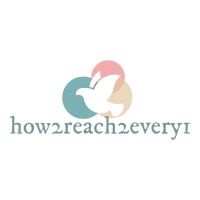A Guide: Starting a Money-Making Blog

Despite the fact that the business and technology environments have evolved considerably over the years, blogging remains a crucial tool for building an online presence, improving brand identification, and sharing ideas with an audience. According to HubSpot, blogging is the third most popular content marketing approach.
Unlike traditional marketing methods, blogging provides a wealth of benefits at little or no cost. A blog may help you express your message in a more personal and compelling way, get a product in front of your target audience, or establish yourself as an expert in a certain industry.

If any of these interests you, it might be time to incorporate blogging into your marketing approach. This guide will teach you how to build a blog in 2022.
What are some of the advantages of beginning a blog?
If you want to connect with a certain group of individuals, a blog might be a fantastic way to start. Readers develop a sense of trust in you when they believe your content adds value to their lives. A blog with problem-solving material like buying recommendations, how-to videos, and industry-specific best practices, for example, may quickly establish you as a go-to source for helpful insights and life-improving advice. The long-term relationship you may develop with an engaged readership is critical to your brand’s success.

A blog may serve as the tip of your sales funnel, consistently generating and converting excellent leads. Another benefit of blogging is that it allows you to create authority in your industry. Content that showcases your expertise while also being of high quality and consistency will set you apart from the competition and boost your credibility in the industry.
It’s also worth noting that the benefits of blogging extend beyond simply growing your audience and generating money online. Starting your own blog, in fact, might be a huge step toward personal growth since it allows you to refine your writing skills while also learning about topics that interest you.
If you’ve determined that blogging is something you can commit to, the next step is to take action. Fortunately, creating a blog is as easy as it is inexpensive, and putting up a successful content plan takes very little technological expertise.
1. Determine Your Area of Expertise.
When it comes to starting a blog, the first step is to choose an appropriate niche. It resonates with the audience when the material is appropriate and relevant to a certain interest. A blog that strives to appeal to everyone and covers a wide range of topics will never be able to build a devoted and engaged audience.
Unless you want to establish a blog for personal use, you should design a content strategy with a specific audience in mind. The first step is to pick a specialism. Here are some suggestions to help you figure out your niche:
Choose something you’re passionate about or something that has a connection to your business or services. Your personal or professional interests should come first when picking a specialty for your blog. Make a mental note of five or six concepts that you think you can build a content strategy around. This little exercise will help you visualize your whole content strategy.
Pay attention to the task at hand. One of the most important steps is to narrow down your interests. Selecting a wide topic is only half the battle; thematically linked sites will help you reach a more targeted audience. Consider your area of expertise and create a content strategy around it.
Use keyword tools to get more ideas. If brainstorming fails to yield the required results, further keyword research strategies might be applied. SEO tools like Ahrefs, Google Keyword Planner, and SEMrush are gold mines for generating blog subject ideas, and their data is especially beneficial for establishing the profitability of a niche.
2. Decide on A Blog Name and Purchase a Domain Name.
The name of your blog will be the first thing your visitors notice, and in many situations, that initial impression will influence how they understand your content. This is why you should come up with a catchy blog name that truly reflects your material and the value you offer your visitors.
You should aim for a name that is straightforward, distinctive, and short, as well as easy to remember and brand. You may stand out and capture people’s attention by using alliteration or a clever joke. As a general rule, avoid names that are too lengthy or have little connection to your specialization.
After you’ve decided on a name for your blog, check for domain name availability and register it with a trustworthy registrar like GoDaddy. If you don’t think a personalized domain name is vital, you may utilize a free domain name on Blogger, Tumblr, or Weebly. Keep in mind that you may add a new domain to your account at any time.
The change, on the other hand, has repercussions. Because connections to your previous domain will no longer work, your blog’s SEO may suffer as a result. This means that search engines won’t be able to rank your content unless you move it to the new domain.
3. Choose A Location for Your Blog to Be Hosted.
The next step is to decide where you want your blog to be hosted. The first step is to include it on your main website. Self-hosting provides you total control over your blog’s design elements and allows you to be more creative with them. You may also employ paid SEO plugins and better optimize your content for Google with a self-hosted blog, which can help you rank higher.
Using a third-party platform is an option. Externally hosting your blog relieves you of the initial setup procedure and allows you to experiment with alternative strategies without paying any upfront expenditures. Remember that you may change your domain name at any moment from a third-party subdomain to a custom domain name.
Wrapping Up
Many blogging platforms, such as Bluehost or SiteGround, allow you to register your own domain name and host your blog on their servers instead of using a third-party web host. Because each platform has its unique set of benefits and drawbacks, you should familiarize yourself with the basics of each platform before making a selection.
- Unlocking the Secrets: How to Become a Successful YouTuber - March 17, 2024
- Unlocking the Power of Home Loan Calculators: A Comprehensive Guide - March 9, 2024
- Understanding Dementia: A Comprehensive Guide - March 7, 2024






